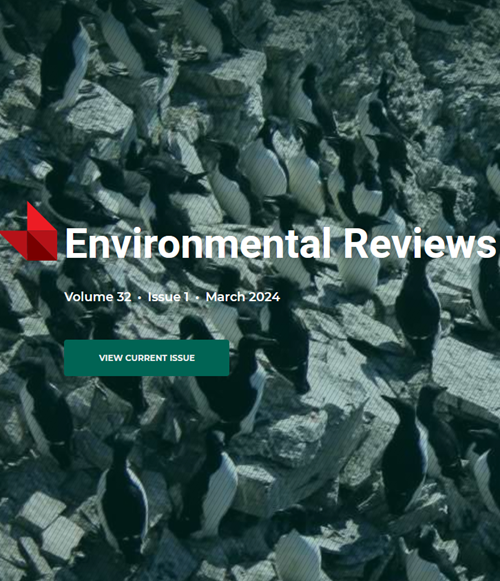Preventing and controlling non-native species invasions to bend the curve of global freshwater biodiversity loss
IF 5.1
3区 环境科学与生态学
Q2 ENVIRONMENTAL SCIENCES
引用次数: 8
Abstract
The Emergency Recovery Plan for freshwater biodiversity recognises that addressing non-native species is one of six principal actions needed to bend the curve in freshwater biodiversity loss. This is because introduction rates of non-native species continue to accelerate globally and, where these species develop invasive populations, they can have severe impacts on freshwater biodiversity. The most effective management measure to protect freshwater biodiversity is to prevent introductions of non-native species. Should a non-native species be introduced, however, then its early detection and the implementation of rapid reaction measures can avoid it establishing and dispersing. If these measures are unsuccessful and the species becomes invasive then control and containment measures can minimise its further spread and impact. Minimizing further spread and impact includes control methods to reduce invader abundance and containment methods such as screening of invaded sites and strict biosecurity to avoid the invader dispersing to neighbouring basins. These management actions have benefitted from developments in invasion risk assessment that can prioritise species according to their invasion risk and, for species already invasive, ensure that management actions are commensurate with assessed risk. The successful management of freshwater non-native species still requires the overcoming of some implementation challenges, including non-native species often being a symptom of degraded habitats rather than the main driver of ecological change, and eradication methods often being non-species specific. Given the multiple anthropogenic stressors in freshwaters, non-native species management must work with other restoration strategies if it is to deliver the Emergency Recovery Plan for freshwater biodiversity.预防和控制非本土物种入侵,以扭转全球淡水生物多样性丧失的曲线
淡水生物多样性紧急恢复计划认识到,解决非本土物种问题是扭转淡水生物多样度丧失曲线所需的六项主要行动之一。这是因为非本土物种的引入率在全球范围内继续加速,并且在这些物种形成入侵种群的地方,它们可能会对淡水生物多样性产生严重影响。保护淡水生物多样性最有效的管理措施是防止外来物种的引入。然而,如果引入非本土物种,那么它的早期检测和快速反应措施的实施可以避免它的建立和传播。如果这些措施不成功,物种变得具有入侵性,那么控制和遏制措施可以最大限度地减少其进一步传播和影响。最大限度地减少进一步的传播和影响包括减少入侵者数量的控制方法和遏制方法,如筛查入侵地点和严格的生物安全,以避免入侵者扩散到邻近的盆地。这些管理行动受益于入侵风险评估的发展,该评估可以根据物种的入侵风险对其进行优先排序,并且对于已经入侵的物种,确保管理行动与评估的风险相称。淡水非本土物种的成功管理仍然需要克服一些实施挑战,包括非本土物种往往是栖息地退化的症状,而不是生态变化的主要驱动因素,根除方法往往是针对非物种的。鉴于淡水中的多种人为压力源,如果要实施淡水生物多样性紧急恢复计划,非本土物种管理必须与其他恢复战略合作。
本文章由计算机程序翻译,如有差异,请以英文原文为准。
求助全文
约1分钟内获得全文
求助全文
来源期刊

Environmental Reviews
环境科学-环境科学
自引率
3.50%
发文量
45
期刊介绍:
Published since 1993, Environmental Reviews is a quarterly journal that presents authoritative literature reviews on a wide range of environmental science and associated environmental studies topics, with emphasis on the effects on and response of both natural and manmade ecosystems to anthropogenic stress. The authorship and scope are international, with critical literature reviews submitted and invited on such topics as sustainability, water supply management, climate change, harvesting impacts, acid rain, pesticide use, lake acidification, air and marine pollution, oil and gas development, biological control, food chain biomagnification, rehabilitation of polluted aquatic systems, erosion, forestry, bio-indicators of environmental stress, conservation of biodiversity, and many other environmental issues.
 求助内容:
求助内容: 应助结果提醒方式:
应助结果提醒方式:


